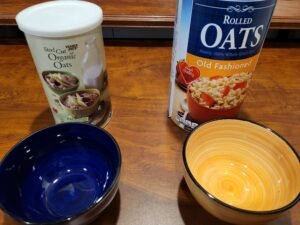The History and Benefits of Classical Pilates
When it comes to fitness and exercise, there are countless options available today. From high-intensity interval training to yoga, it can be overwhelming to choose the right exercise routine for your needs. However, one form of exercise that has stood the test of time is classical Pilates. In this blog post, we will explore the history of classical Pilates, including information about its founder, Joe Pilates, and the apparatus he invented. We will also delve into many benefits that classical Pilates offers.
Classical Pilates was originally called Contrology. These days it’s often referred to as simply Pilates. It’s a physical fitness system that was developed by Joseph Pilates in the early 20th century. Born in Germany in 1883, Joe Pilates was a sickly child who suffered from asthma, rickets, and rheumatic fever. Determined to overcome his physical ailments, he dedicated his life to studying various exercise disciplines and developing his own unique method.
In the 1920s, Joe Pilates immigrated to the United States and opened a studio in New York City. It was there that he introduced his exercise system, which he initially called “Contrology.” This name reflected his belief that the method he had developed required the mind to control the muscles. Over time, his exercise system gained popularity among dancers, athletes, and individuals seeking a holistic approach to fitness.
One of the defining features of classical Pilates is the use of specialized apparatus, which Joe Pilates invented himself. The most well-known apparatus is the “Reformer,” a bed-like frame with a sliding carriage and various springs and pulleys. The Reformer allows for a wide range of exercises to be performed, targeting first the core muscles along with different muscle groups and providing resistance for strength training.
In addition to the Reformer, there are other apparatus used in classical Pilates, such as the Cadillac, Wunda Chair, and Barrel. Each apparatus offers unique exercises and challenges, allowing practitioners to continuously progress and improve their strength, flexibility, and overall fitness.
Now, let’s explore the many benefits that classical Pilates offers. First and foremost, Pilates is a low-impact form of exercise, making it suitable for individuals of all ages and fitness levels. The controlled movements and emphasis on proper alignment help to minimize the risk of injury, making it an ideal choice for those recovering from injuries or with chronic conditions.
Furthermore, classical Pilates focuses on developing core strength, which is essential for maintaining proper posture and stability. By strengthening the deep abdominal muscles, Pilates helps to improve overall body alignment and reduce the risk of back pain and other musculoskeletal issues.
Another key benefit of classical Pilates is its ability to improve flexibility and mobility. The exercises performed on the apparatus and the mat work to stretch and lengthen the muscles, improving range of motion and joint mobility. This can be particularly beneficial for athletes looking to enhance their performance and prevent injuries.
Additionally, classical Pilates promotes body awareness and mindfulness. The method emphasizes the connection between the mind and body, encouraging practitioners to focus on their breath, alignment, and movement patterns. This mind-body connection not only enhances the effectiveness of the exercises but also helps to reduce stress and promote relaxation.
In conclusion, classical Pilates is a time-tested exercise method that offers a wide range of benefits. From its history rooted in the teachings of Joseph Pilates to the use of specialized apparatus and its focus on core strength, flexibility, and body awareness, classical Pilates provides a holistic approach to fitness. Whether you are a beginner or an experienced practitioner, incorporating classical Pilates into your fitness routine can help you achieve your health and wellness goals.
Classical Pilates, developed by Joseph Pilates in the early 20th century, has its origins in the life of its creator. Born in Germany in 1883, Joe Pilates was faced with various health challenges from a young age. He battled with asthma, rickets, and rheumatic fever, which left him weak and frail. However, instead of succumbing to his ailments, Pilates was determined to overcome them and embarked on a lifelong journey to improve his physical strength and overall well-being.
During his quest for better health, Joe Pilates came to the realization that the mind and body are intricately connected. He firmly believed that by strengthening the body, one could also strengthen the mind, and vice versa. This belief formed the foundation of his exercise method, which he initially named “Contrology.” The term later evolved into what we now know as Pilates.
Upon moving to New York City in the 1920s, Joe Pilates opened a studio where he began teaching his unique exercise system. His teachings quickly gained popularity among dancers, athletes, and individuals seeking a comprehensive approach to fitness. The benefits of Pilates were recognized not only for physical conditioning but also for mental clarity and overall well-being.
Joe Pilates’ studio became a hub for those looking to improve their strength, flexibility, and posture. Dancers, in particular, found Pilates to be a valuable tool for enhancing their performance and preventing and recovering from injuries. The method’s emphasis on core strength, alignment, and controlled movement appealed to athletes of various disciplines as well.
Over the years, Classical Pilates has continued to evolve, with dedicated instructors carrying on Joseph Pilates’ legacy. Today, it is practiced worldwide and has gained recognition as a highly effective exercise system that promotes strength, flexibility, and mind-body connection.
The Apparatus Invented by Joe Pilates
One of the distinguishing features of classical Pilates is the use of specialized apparatus. Joe Pilates invented a range of equipment to enhance the effectiveness of his exercises. Here are some of the key apparatus used in classical Pilates:
The Reformer: The reformer is perhaps the most well-known piece of Pilates equipment. It consists of a sliding carriage, springs, and various attachments that allow for a wide range of exercises. The reformer provides resistance and support, making it suitable for individuals of all fitness levels. The sliding carriage enables exercises that target the entire body, including the arms, legs, core, and back. The resistance provided by the springs can be adjusted to accommodate different levels of strength and flexibility, allowing for progressive overload and continuous improvement.
The Cadillac: The Cadillac, also known as the Trapeze Table, is a versatile piece of equipment that combines a bed-like structure with bars, straps, and springs. It offers a full-body workout and can be used to perform a variety of exercises targeting strength, flexibility, and balance. The bars and straps provide additional support and assistance, allowing for modified exercises or variations to suit individual needs. The springs on the Cadillac offer varying levels of resistance, enabling users to challenge themselves and progress in their Pilates practice.
The Wunda Chair: The Wunda Chair is a compact piece of equipment that resembles a chair with a pedal system. It is ideal for challenging the core muscles and improving balance and coordination. The chair’s pedals can be adjusted to different heights and resistance levels, allowing for a customized workout. The Wunda Chair is particularly effective for exercises that target the lower body, such as squats, lunges, and leg presses. It also provides a stable platform for upper body exercises, such as push-ups and tricep dips.
The Barrel: The Barrel, available in different sizes and shapes, is used to improve flexibility, posture, and spinal alignment. It can be used for stretching, backbends, and other exercises that target the back and abdominal muscles. The rounded shape of the Barrel allows for a greater range of motion, enabling users to perform deeper stretches and achieve better spinal extension. The Barrel can also be used for balance exercises, as it provides a stable surface for standing or sitting on.
9. Improved Breathing and Oxygenation
In classical Pilates, proper breathing techniques are emphasized throughout each exercise. The focus on deeply breathing into the back and sides of the body helps to oxygenate the body and improve lung capacity. This helps to keep abdominals engages and can result in increased energy levels, improved circulation, and enhanced overall well-being.
10. Increased Body Awareness and Mindfulness
Classical Pilates requires a high level of concentration and body awareness. As you perform each movement with precision and control, you become more attuned to the sensations in your body. This heightened awareness can extend beyond your Pilates practice and into your everyday life, allowing you to make more conscious choices about your movement patterns and body mechanics.
11. Improved Digestion and Detoxification
The gentle, rhythmic movements of classical Pilates can stimulate the digestive system and promote healthy digestion. Additionally, the attention to breathing techniques used in Pilates can aid in detoxification by stimulating lymphatic flow and promoting the elimination of waste and toxins from the body.
12. Increased Energy and Vitality
Regular practice of classical Pilates can boost energy levels and improve overall vitality. The combination of physical movement, deep breathing, and mental focus can invigorate the body and mind, leaving you feeling refreshed and revitalized.
13. Improved Sleep Quality
Engaging in regular exercise, such as classical Pilates, has been shown to improve sleep quality. The physical exertion and mental relaxation experienced during a Pilates session can help promote a restful night’s sleep, allowing you to wake up feeling refreshed and rejuvenated.
14. Increased Confidence and Body Image
As you progress in your classical Pilates practice and witness the improvements in your strength, flexibility, and overall physicality, you may experience a boost in self-confidence. The mind-body connection cultivated through Pilates can also help you develop a more positive body image, focusing on what your body can do rather than how it looks.
15. Social Connection and Community
Practicing classical Pilates can provide an opportunity for social connection and community. Whether you attend group classes or join an online Pilates community, you can connect with like-minded individuals who share a passion for health and wellness. This sense of community can provide support, motivation, and accountability on your Pilates journey.
16. Long-Term Health and Well-being
By incorporating classical Pilates into your regular fitness routine, you can experience long-term health benefits. The combination of strength, flexibility, and mind-body awareness can help prevent age-related decline, improve overall physical function, and enhance your quality of life as you age.
17. Personal Growth and Self-Development
Engaging in a regular classical Pilates practice can be a journey of personal growth and self-development. As you challenge yourself physically and mentally, you may discover new strengths, overcome limitations, and develop a greater sense of self-awareness and self-empowerment.
18. Fun and Enjoyment
Above all, classical Pilates can be a fun and enjoyable form of exercise. The variety of exercises, the focus on proper technique, and the sense of accomplishment when mastering a new movement can make each Pilates session a rewarding and pleasurable experience.
In conclusion, classical Pilates offers a wide range of benefits for both the body and mind. From improved core strength and flexibility to enhanced posture and mental well-being, Pilates can be a transformative exercise method that promotes overall health and vitality. Whether you are a beginner or an advanced practitioner, incorporating classical Pilates into your fitness routine can contribute to a balanced, strong, and resilient body, as well as a calm and focused mind.



